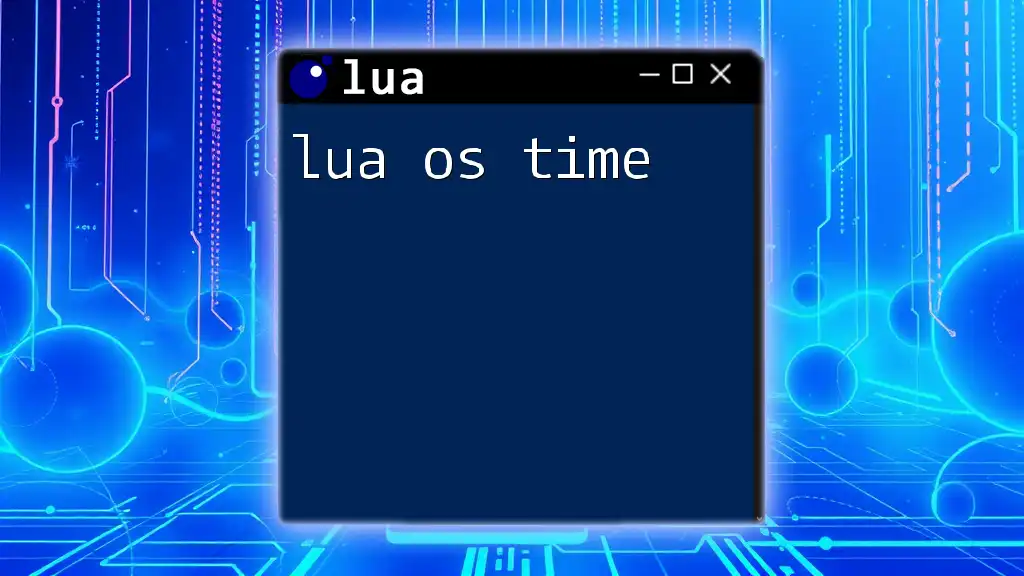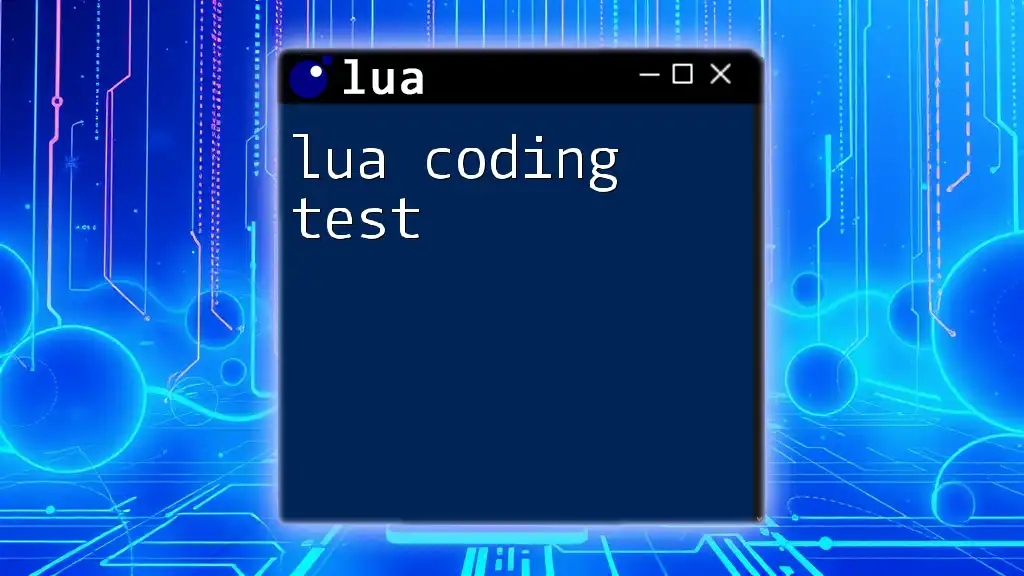In Lua, you can set a timeout for TCP connections using the `socket.settimeout()` function from the LuaSocket library, ensuring that your connection attempts do not hang indefinitely.
local socket = require("socket")
local tcp = socket.tcp()
tcp:settimeout(5) -- Set the timeout to 5 seconds
local success, err = tcp:connect("localhost", 8080)
if not success then
print("Connection failed: " .. err)
else
print("Connected successfully!")
end
Understanding TCP Connections in Lua
What is TCP?
Transmission Control Protocol (TCP) is a fundamental protocol used in networking that allows for reliable, ordered, and error-checked delivery of data between applications. TCP is connection-oriented, meaning that a connection must be established between the communicating endpoints before data can be sent. This ensures that data packets are delivered accurately and in the correct order.
The Role of Lua in Networking
Lua, a lightweight and high-level scripting language, is widely used in web servers, game development, and embedded systems, among other areas. Its simplicity and efficiency make it a strong candidate for scripting network applications. When integrated with TCP functions, Lua can handle various networking tasks effectively, such as creating servers and managing connections.

What is a Connection Timeout?
Definition of Timeout
A timeout in networking refers to a specified duration during which a connection must be established or a response must be received. If the operation is not completed within this time frame, it is classified as a timeout event, which helps prevent applications from hanging indefinitely.
Why Connection Timeouts are Essential
Implementing connection timeouts is crucial in any networked application for several reasons:
- Resource Utilization: Without timeouts, applications could exhaust system resources by attempting to establish connections for an extended period.
- Application Responsiveness: Timeouts enable applications to recover gracefully when a connection cannot be established, maintaining a responsive experience for users.
- Error Handling: Connection timeouts help identify issues with network availability, allowing developers to implement appropriate error handling measures.

Implementing TCP Connect Timeout in Lua
Basic Lua TCP Connection Example
To establish a TCP connection in Lua, we utilize the `socket` library, which provides the necessary functions. Here’s a simple example of creating a TCP connection:
local socket = require("socket")
local client = socket.tcp()
client:settimeout(5) -- Set a general timeout for operations
local success, err = client:connect("example.com", 80)
if not success then
print("Connection failed: " .. err)
else
print("Connected successfully!")
client:close()
end
This code initializes a TCP client, sets a timeout of 5 seconds, and attempts to connect to `example.com` on port 80. If the connection fails, it prints the error message; otherwise, it confirms success.
Setting a Timeout for a TCP Connection
Using `settimeout()`
The `settimeout()` function is used to specify the duration for how long your application should wait for a connection. Depending on your needs, timeouts can be configured as blocking (wait indefinitely) or non-blocking (timeout after the specified duration).
Example: Setting a Connection Timeout
Let’s look at how to enforce a timeout during a connection attempt:
local socket = require("socket")
local client = socket.tcp()
client:settimeout(5) -- 5 seconds timeout for this connection
local success, err = client:connect("example.com", 80)
if err == "timeout" then
print("Connection timed out!")
elseif not success then
print("Connection failed: " .. err)
else
print("Connected successfully!")
client:close()
end
In this example, the connection to `example.com` is attempted. If the connection does not establish within 5 seconds, the application outputs a timeout message, enhancing error visibility and improving user experience.
Handling Connection Timeout Errors
Error Codes and Handling
When handling connection timeouts, it is critical to anticipate various error codes. These codes inform developers about the nature of the failure, allowing for appropriate handling actions.
Here’s an example of implementing robust error handling for connection timeouts:
local function connect_with_timeout(host, port)
local client = socket.tcp()
client:settimeout(5) -- 5 seconds timeout
local success, err = client:connect(host, port)
if err == "timeout" then
print("Connection to " .. host .. " timed out!")
return nil
elseif not success then
print("Failed to connect: " .. err)
return nil
end
return client
end
In this function, the connection timeout is managed gracefully. It informs the user when a timeout occurs and handles other potential errors, which is essential for effective troubleshooting in network applications.

Best Practices for Managing TCP Connect Timeouts
Determining Appropriate Timeout Values
Choosing the correct timeout value can depend on several factors, including network speed, the reliability of the destination server, and application requirements. Best practices recommend:
- Setting timeouts based on typical response times for your application.
- Allowing configurations to adjust timeouts dynamically as needed based on different environments (development vs. production).
Testing and Monitoring
Testing different timeouts is vital for ensuring robust application performance. By simulating various network conditions and monitoring connection behaviors, developers can gather insights into how their application reacts under different scenarios. This proactive approach helps optimize timeout settings and enhances overall application stability.

Conclusion
Understanding and implementing Lua TCP connect timeout effectively ensures that your applications can handle network communication reliably. By setting appropriate timeout values and incorporating robust error handling, you can create responsive and efficient networked applications. Embrace these best practices to empower your Lua projects to run smoothly, minimizing downtime and improving user experience.

Call to Action
If you're eager to learn more about Lua networking, enhance your skills, or explore additional resources, consider signing up for our comprehensive courses or newsletters to stay updated on the latest Lua development techniques!

















